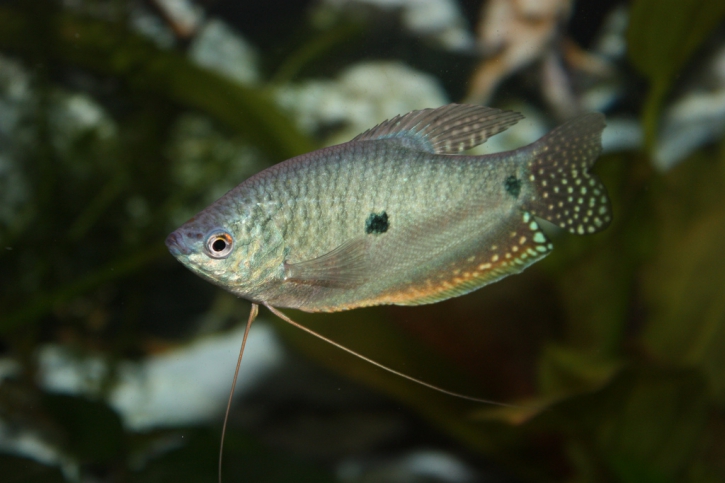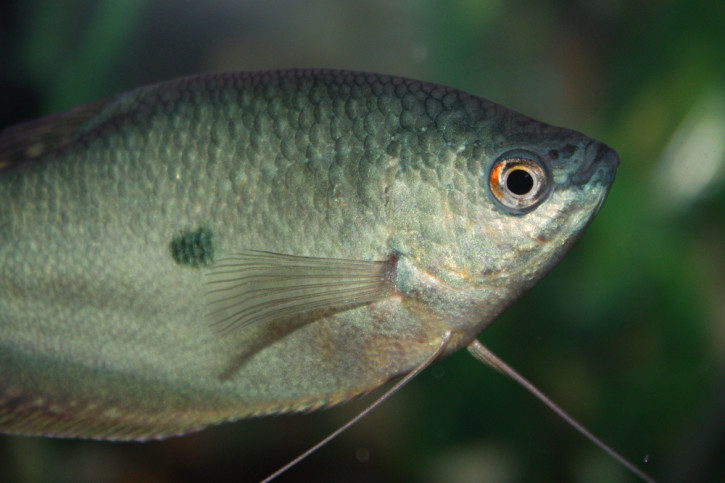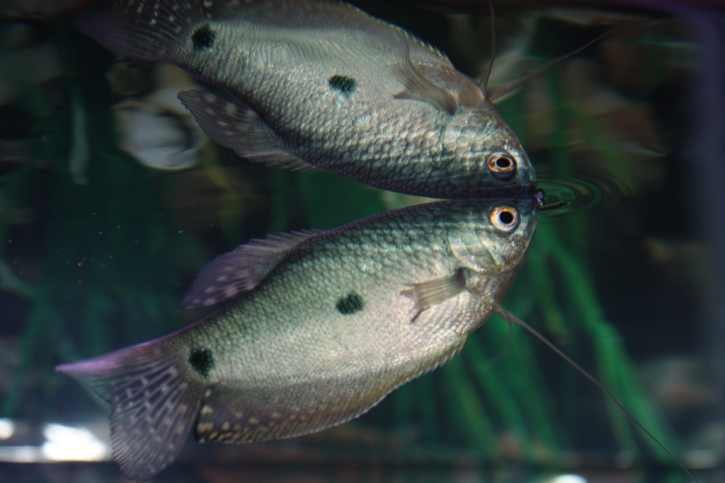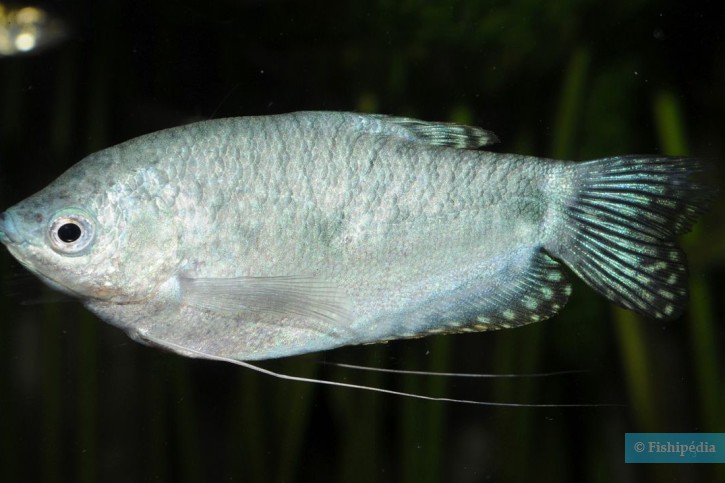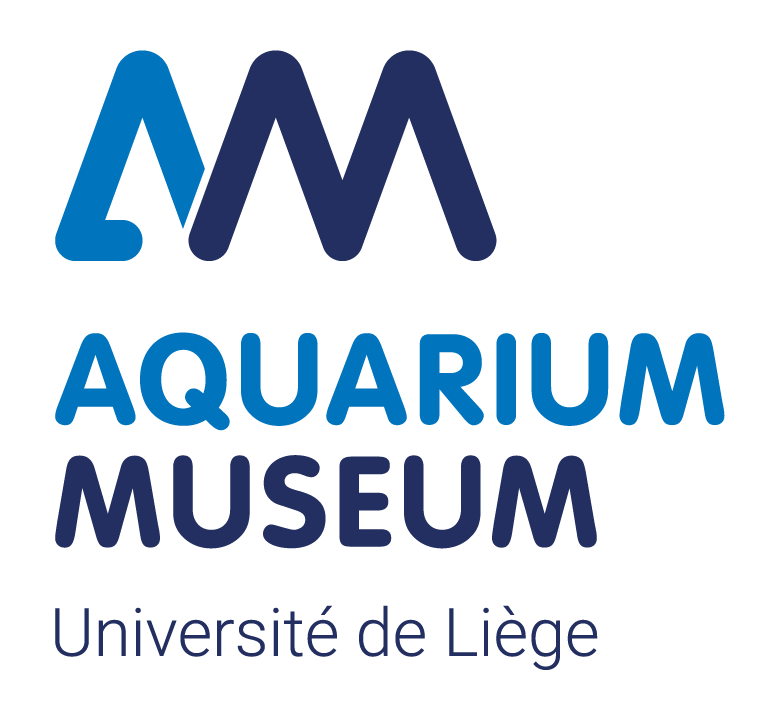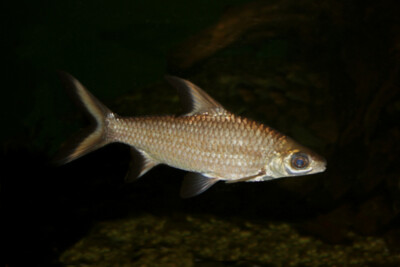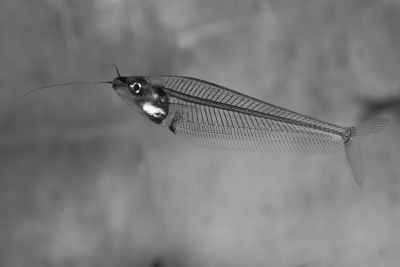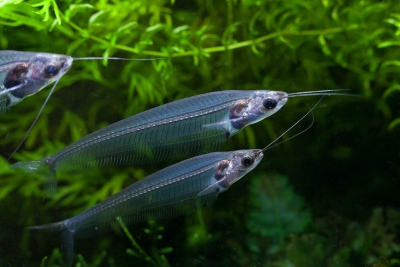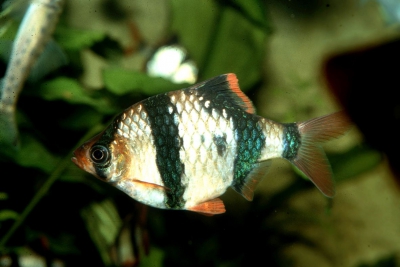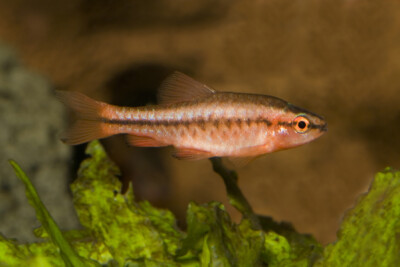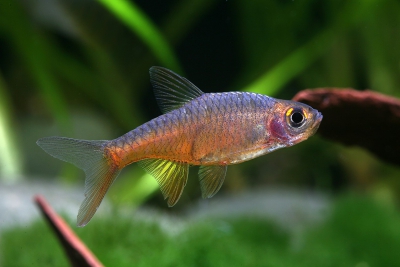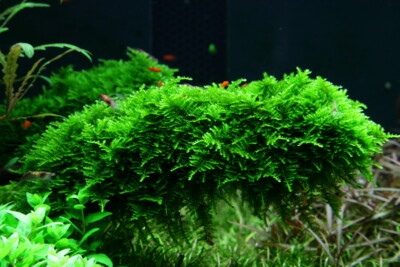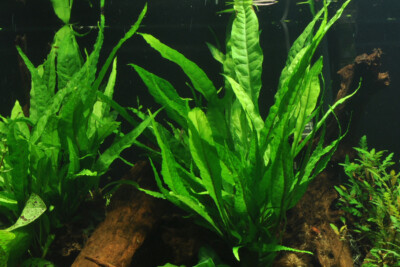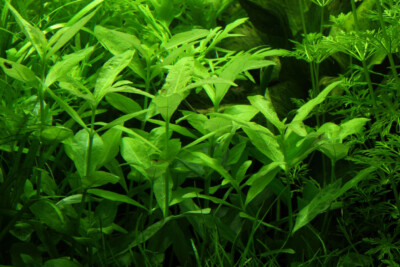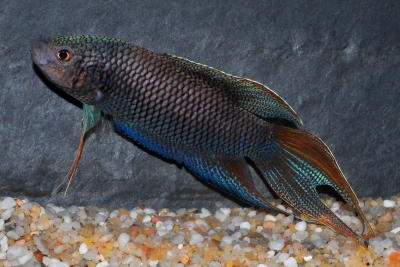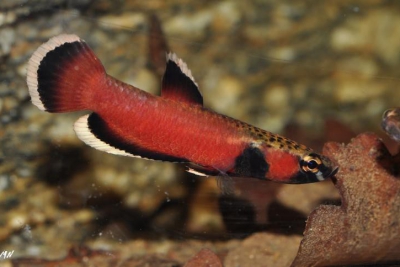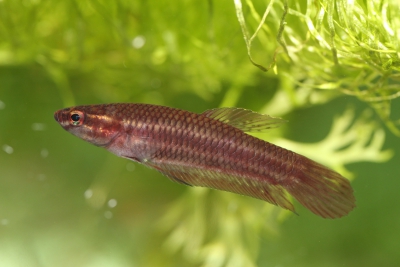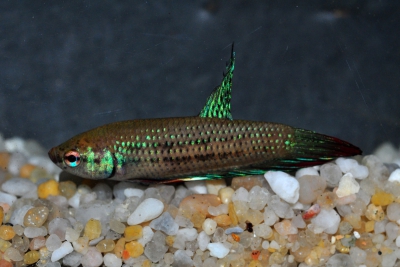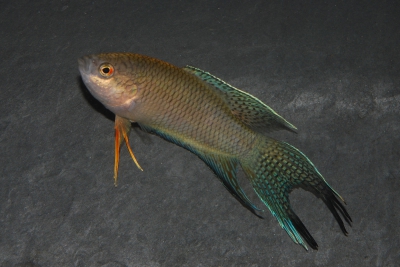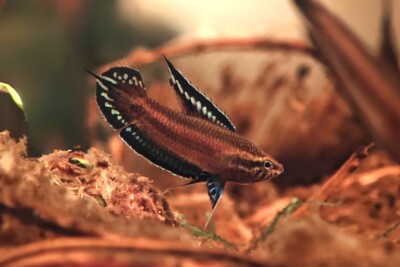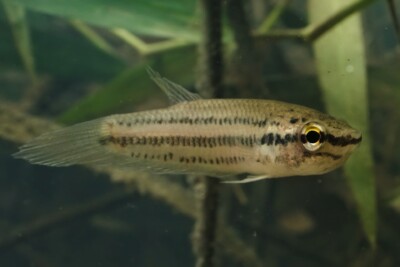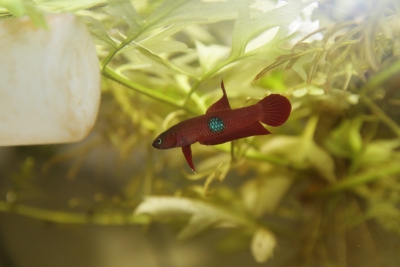three spot gourami
| Family | Osphronemidae |
|---|---|
| Genus | Trichopodus |
| IUCN category (World) | LC |
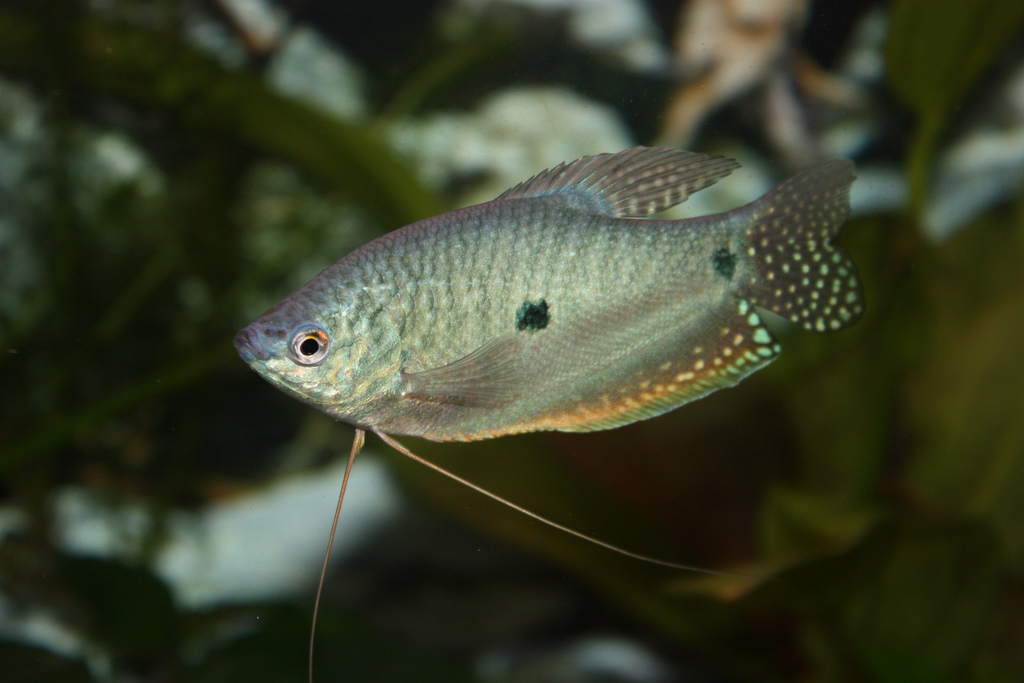

Introduction
Trichopodus trichopterus, commonly known as three spot gourami, is a fresh water fish from the Asia.
This sheet is currently being prepared. The texts currently proposed come from our data model or are being drafted. To request priority for this content, you can write to us HERE.
Who is it?
Genus Trichopodus
All species in the genus Trichopodus are commonly referred to as “gouramis.” As of 2021, six species have been described, three of which are well known in the aquarium hobby. The taxonomy of the group has changed frequently over time. Some species were previously classified under the genera Deschauenseeia, Osphromenus, Colisa, and Trichogaster. From 1923 to 1997, most were placed under Trichogaster due to a misinterpretation by Myers.
Trichopodus species inhabit densely vegetated ponds and marshy areas in Southeast Asia, from Myanmar to the major Indonesian islands. They are particularly common in the floodplains of the Mekong River and the slow-moving streams of Borneo. Most feed on crustaceans and aquatic microorganisms, while some species supplement their diet with aquatic plants. In several regions, these fish are farmed both for the aquarium trade and for food. They are prized by South Asian fishermen, and in many tropical countries, some Trichopodus have become invasive after being introduced into the wild.
These fish are generally gregarious, forming loose groups of varying sizes. Males are territorial and tend to fight. During the breeding period, mature males build bubble nests at the water surface, among floating vegetation. During this phase, their colors intensify, and males become more aggressive and territorial. The initial phase of spawning occurs among plants. Once completed, the male chases the female away and moves the eggs into the bubble nest. The female may return to lay more eggs, or another female may be courted, after which the male repeats the process. The male guards the nest until the fry hatch.
Like their close relatives, their bodies are laterally compressed and feature a long anal fin. The pelvic fins have evolved into long, filamentous structures used as sensory organs. These filaments are covered in taste buds innervated by the facial nerve, used for both touch and taste.
Gouramis of the genus Trichopodus can be distinguished from their closest relatives by a short-based dorsal fin located mid-body, far behind the base of the pectoral fins. The lateral line is always present, though it may be interrupted. The caudal fin is forked. Adult males can be recognized by their more pointed dorsal fins.
The labyrinth organ, located in a cavity above the gills, allows them to absorb oxygen from the air at the surface. Although they can breathe through their gills and the labyrinth organ even in well-oxygenated water, they will eventually drown if they cannot access the surface. This ability offers a considerable advantage during dry seasons, when oxygen levels are low, and also makes them more resilient in degraded environments.
Morphology
-
Average size10 cm
-
Maximum size12 cm
-
Longevity8 year
-
Average size10 cm
-
Maximum size12 cm
-
Longevity8 year
How to recognize This fish ?
Like all fish of its genus, the three spot gourami has the particularity of being able to breathe in two different ways. In addition to the classic gills, this species is equipped with a breathing apparatus called Labyrinthe which allows it to absorb oxygen from the air. These species are commonly called the labyrinth Fish.
The three spot gourami measures between 10 and 12 cm. This fish is unicolore with a predominantly bleu body.
Behaviour & Life cycle
-
dietcarnivorous
-
Sociabilityliving as a couple or in a group
-
territorialNo
-
Way of livingdiurnal
The three spot gourami is a fish living as a couple or in a group naturally found at mid-depth. This species is carnivorous .
Although the three spot gourami is non-territorial, it is sometimes aggressive towards other species. It also shows signs of aggression towards its conspecifics.
Reproduction
-
Reproductionovipare réalisant des nids de bulles
The three spot gourami is a fish ovipare réalisant des nids de bulles.
Harmless species
This species does not represent any particular threats to humans when encountered in its natural environment.
Origin and distribution
What is its habitat?
Natural environment characteristics
-
Temperature22 - 26 °C
-
pH (acidity)6 - 7
-
gh (hardness)5 - 19
-
FlowSlow
Biotope presentation
This animal evolves in areas characterized by a strong presence of vegetation (aquatic and marsh plants, decaying organic matter, roots...).
During dry periods, the three spot gourami may find themselves isolated in marshes and small water holes with little oxygen. Its ability to gasp for air at the surface allows it to resist until the next season.
Main recommendations for fishkeeping
Deontology
In order to preserve wildlife, if you acquire this animal, it must not be released into the wild. See also, the Fishipedia charter.
Fishipedia supports the practice of responsible and environmentally friendly aquarium keeping. We encourage maintenance if it is motivated by a desire to understand the biological functioning of living things and if it is done with respect for animal life.
We believe that aquaristics is an opening to the discovery of aquatic environments, especially freshwater, and that this knowledge is necessary to better protect and respect these environments. Logically, we refute the compulsive purchase of animals that would not find a sufficient and / or adapted place in the host aquarium.
Our recommendations
-
Min volume200 liters
-
Population minnot specified
-
Temperature22 - 26 °C
-
pH (acidity)6.8 - 7.2
Characteristics
-
Difficulty breedingeasy
-
Robustnesstolerant
-
Behaviourslightly aggressive
-
Availabilitystandard
Recommended equipment from our partners
-
Aquarium
-
Filtration
General reminders
It is strongly advised to read the complete dedicated file and to get information on the feedbacks of maintenance of the envisaged animal, this to avoid any potential conflict whose end result is generally the death of the individual (or the other inhabitants). It is important not to overload your aquarium to limit pollution. This will make maintenance easier.
In nature, animals are subject to weather conditions and live in waters with variable characteristics. The recommendations offered by our team for aquarium maintenance are a guidance and cannot be assimilated to scientific datas.
General reminder on maintenance datas
Le démarrage d'un aquarium est une partie primordiale pour l'équilibre et le bien-être des poissons. Lorsque l'on met en eau un aquarium, l'eau passe naturellement par un cycle biologique : le cycle de l'azote. Celui-ci dure environ trois semaines. Tous les 2 jours, nous vous conseillons de tester votre eau jusqu'à ce que le taux de nitrite soit à zéro pendant plusieurs jours d'affilée.
Pour accélérer ce cycle, vous pouvez utiliser un activateur de bactéries comme JBL Denitrol. Cette solution riche en bactéries vivantes et enzymes permet une mise en place rapide du cycle de l'azote. Les poissons peuvent alors être introduits plus rapidement.
Il est important de tester l'eau de son aquarium régulièrement pour maintenir un environnement sain pour les poissons et les autres habitants. Les tests d'eau permettent de mesurer les niveaux de différents paramètres tels que le pH, la dureté totale, ainsi que les taux de nitrates, de nitrites et d'ammoniaque.
Pour réaliser ces tests, vous pouvez utiliser des produits d'analyse spécialisés tels que JBL ProScan qui permet de réaliser un diagnostic de l'eau directement via un smartphone. Il existe également des coffrets de tests plus classiques de bandelettes, comme JBL PROAQUATEST.
En cas d’usage de l’eau du robinet, vous pouvez utiliser un conditionneur d’eau de type Biotopol de JBL pour éliminer les substances nocives comme le chlore, le cuivre, le plomb et le zinc. Une eau trop dure ou trop calcaire peut être inadaptée à de nombreuses espèces tropicales d’eau douce. Si nécessaire, vous pouvez la couper avec de l’eau osmosée ou de pluie filtrée afin d’obtenir une dureté plus adaptée aux besoins de vos poissons et de vos plantes. Les conditionneurs d'eau garantissent une meilleure santé aux poissons et une meilleure croissance des plantes.
Chlorine and chloramine are dangerous for the health of animals. Used to disinfect water, these agents are present in significant quantities in tap water. We recommend using an anti-chlorine agent every time you change the water. In addition to chlorine, treatments and medicines sold for aquarium use sometimes contain dangerous heavy metals in high doses.
Specific needs for the three spot gourami
The three spot gourami is a species which lives naturally at a temperature between 22 °C and 26 °C. Nitrate levels should remain below 50mg/L. To keep the water clean and unpolluted, plan on changing 20% to 30% of the water volume each month.
Breeding this species is accessible to any hobbyist. It is recommended to follow some basic rules and to be rigorous to achieve a good maintenance.
This species is particularly common in the aquarium trade. Animals from long-term breeding are usually acclimatized at a temperature of about 26 °C in neutral water.
Fish with a maze
The ability to breathe at the surface makes this fish more likely to live in small volumes. Naturally, the three spot gourami can be found for long periods in water holes where oxygen is scarce.
Cohabitation & Environment
In a community aquarium context, this species should be kept in a minimum volume of 200 liters.
The three spot gourami is a fish that generally lives in groups outside of the reproduction periods. If you want to reproduce them and have a good chance of forming a couple, it is recommended to keep at least 5 individuals.. In a community aquarium, the chances of survival of the larvae are almost null. After a few spawns, it is preferable to isolate the couple or to separate from the other members of the group.
The hierarchical organization and the aggressiveness between fellow fish can weaken certain individuals, the presence of hiding places becomes then necessary. If you wish to add new members, it is better to introduce younger fish. They will have a better chance of integrating into the new balance.
The species enjoys a particularly vegetation-rich environment. The addition of plants will provide many useful hiding places for resting. These areas are also conducive to possible breeding in the aquarium. Floating plants such as Salvinia can be added to recreate the subdued atmosphere characteristic of its living conditions in the wild.
Tips for feeding
The three spot gourami is carnivorous.
This species can eat dry food (flakes, pellets), fresh food and frozen food. To avoid deficiencies, it is recommended to vary the types of food.
Feed animals in moderation to maintain good water quality. Meals should be eaten within 2–3 minutes, served in several small portions rather than a single large ration.
Uneaten food quickly decomposes, releasing ammonia, nitrites, and nitrates, which disturb the aquarium’s biological balance.
Make sure each species can access food properly, slower or bottom-dwelling individuals may require targeted feeding.Food recommendations from our partner JBL - Products PRONOVO
-
Granules
-
Flakes
Reproduction protocol
-
egg-laying protectionNo
Hybridization risks
In general, it is advised not to mix several species of the same genus or different varieties of the same species, to avoid the risks of hybridization.
These animals might interest you
These plants might interest you
Plants play a crucial role in aquariums, both for their ability to filter water by absorbing excess nutrients and for their aesthetic contribution. They provide fish with natural hiding places, can serve as breeding sites, and generally help maintain the overall balance and optimal conditions of the aquarium. The selection presented here includes species from the same regions as the species described on this page, although they do not necessarily come from its exact natural biotope.
To go further
Sources & Contributions
Participation & Validation
The Fishipedia team and specialist contributors are committed to providing high-quality content. However, although the information comes from scientific sources or testimonials from specialists, the cards may contain inaccuracies.

Patrick Chartrer
Translation
Translation done with the valuable contribution of our translators, who make this information available to a wider audience. We sincerely thank them for their commitment.
Scientific partners
Tags
Species of the same family
